Original author: TechFlow
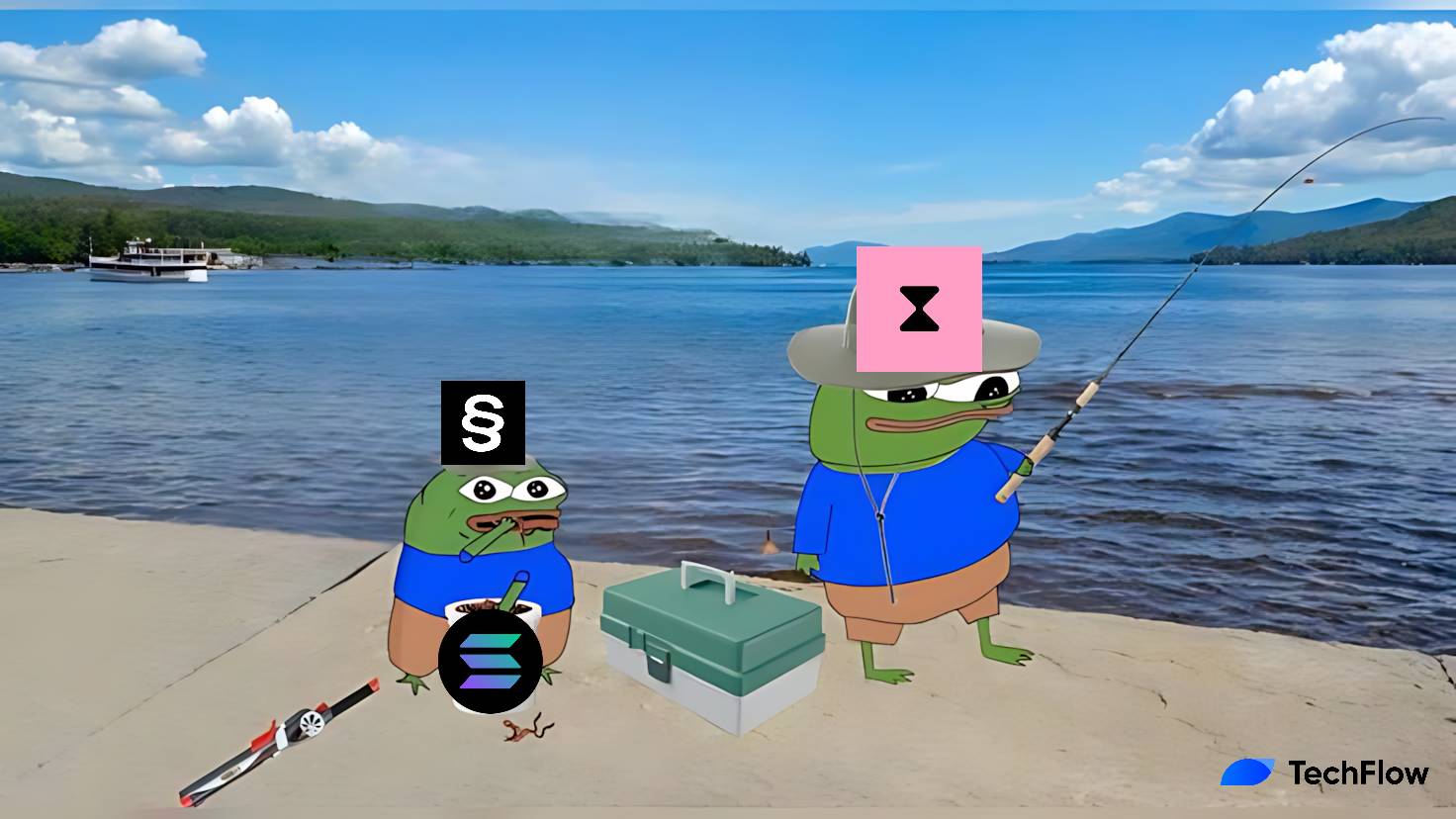
Bitcoin fell to $86,000, and the market was in mourning.
When shrouded in panic and anxiety caused by the decline, the market tends to pay more attention to new ways of asset issuance.
Yes, although $SOL has fallen to as low as $130, it does not affect the enthusiasm of Solana ecosystem projects to make new things. Yesterday, two new asset launch platforms, Time.fun and Super.exchange , continued to ferment and were hyped.
1. Time.fun: Is your time very valuable?
Solana executives push
Yesterday, Solana co-founder Toly ( @aeyakovenko ) issued coins, but unlike the celebrity coins previously launched on pump.fun, the platform Toly chose this time is called Time.fun , a SocialFi platform where you can sell your time.
Its token $toly (tolys minutes) had a maximum market value of 20 million US dollars after it went online, and its current market value is around 8 million US dollars, with a unit price of 80 US dollars per coin, or 80 US dollars per minute.
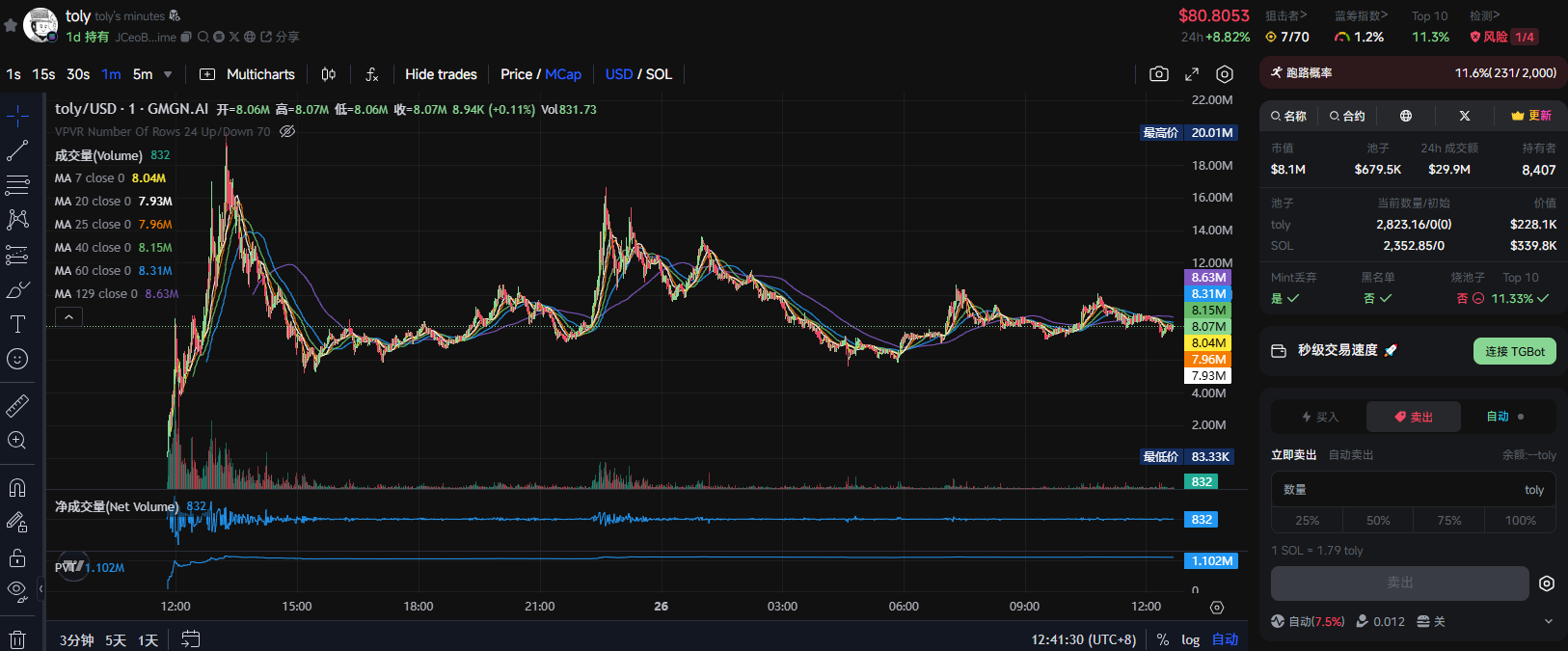
This pricing method based on time is the mechanism innovation of Time.fun.
Similar to the previously popular Friendtech, Time.fun allows creators to convert their social sharing opportunities into tokens, but this time it is priced in time (per minute). Fans can buy these time tokens to get the opportunity to interact with creators. This form of interaction includes basic functions such as private messages and group chats, and plans to launch more diverse interaction methods such as voice/video calls and auctions in the future. Creators can obtain handling fee income from each token transaction, maximizing the value of time.
Time.fun, formerly Circle.tech, was initially deployed in the Base ecosystem and was recently officially launched in the Solana ecosystem. Toly not only chose to join Time.fun as soon as possible, but also praised the project itself: Business communications is my favorite crypto use case.
Similarly, Mert Mumtaz ( @0xMert_ ), an important member of the Solana ecosystem, also expressed his recognition of Time.fun and launched his own token $mert in Time.fun.
How to participate?
Go to Time.fun official website: https://time.fun/login, first register and log in via email.
Transactions within the platform are denominated in USDC. There is no need to connect to an existing wallet. The platform will generate a dedicated corresponding wallet account. You need to deposit USDC from the Solana network into the account. You can do so via credit card, Apple Pay, and encrypted transfers.

After depositing funds, select the celebrity Ticker you want to trade. There is no limit on the buy-in amount, and it can be priced in time or in US dollars.
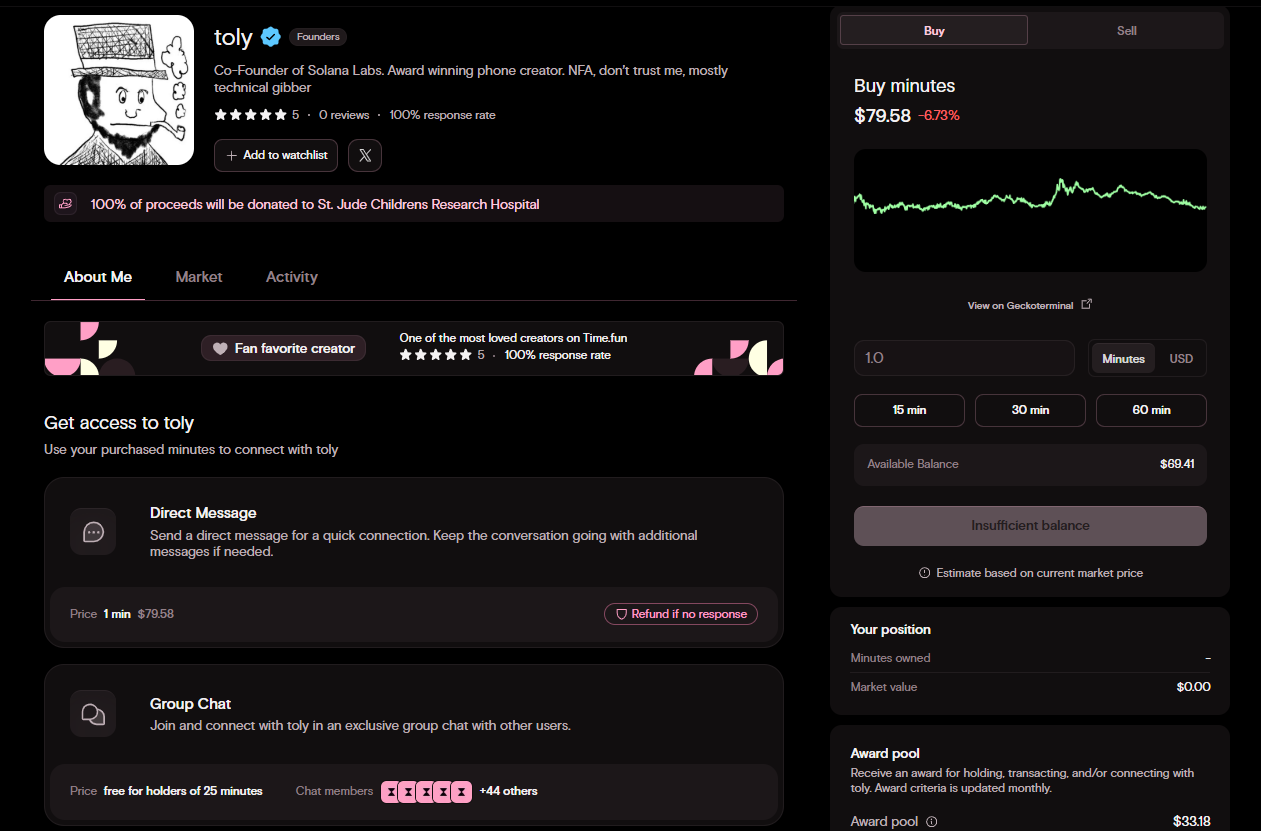
In addition to buying other people’s time, you can also sell your own time. It is worth noting that users who issue time tokens on the platform must pass identity verification, which also ensures that the time tokens purchased on Time.fun are genuine celebrity tokens.
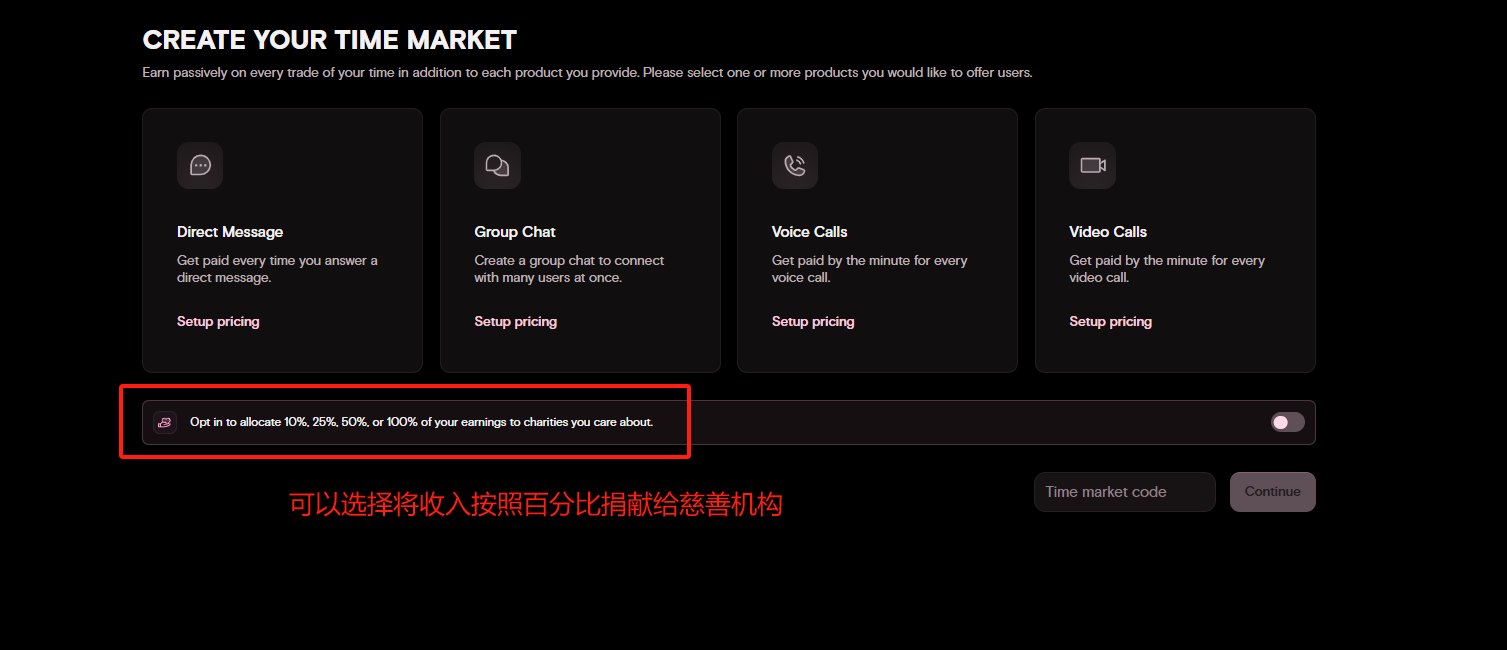
2.Super.exchange: Trade first and then buy coins, the earlier you enter, the more advantageous it is?
Super.exchange is similar to a combined variant of Pump.fun + Hyperliquid, improving two core gameplays of the current asset issuance platform: growth curve and points incentive system.
Next, we will briefly explain its operating principles from the perspective of technical implementation and user participation.
Super Curve based on Pump.fun
Different from the inside and outside plate mechanism of Pump.fun, Super Curve of Super Exchange uses a combination of 7 curves.
(xⁿ * y = k, where n is 32, 16, 8, 4, 3, 2, and 1 respectively)
The life cycle of a token is divided into several stages:
Low market capitalization stage (high n value): The curve is flat, allowing the token price to rise slowly, preventing early investors from buying too many tokens at one time and then dumping them suddenly.
Medium to high market capitalization stage (low n value): The slope of the curve gradually increases to ensure that there is sufficient liquidity support when prices rise.
Simply put, this design prevents big dealers from obtaining huge amounts of chips in the early stages, and to a certain extent avoids the phenomenon of a single large investor dumping the token to disrupt the trend during its rise.
Points incentive mechanism
In addition to relying on improving the launch curve to ensure institutional fairness, the incentive mechanism of using platform points to purchase platform tokens $SUPER is the main means of attracting users to enter.
Points allocation rules
Points are issued every 5 minutes, and the total amount is dynamically calculated by the following formula:
As the total amount of SUPER tokens decreases, the points distributed in each cycle gradually decreases, which means that the earlier users participate, the higher the benefits.
80% of the points are allocated to traders, and the points earned are linked to their trading behavior and token quality: the greater the trading volume, the higher the liquidity and user base of the trading token, the more points they will get.
20% points reward to the inviter. Users can get 25% of the invitees points by inviting new users.
Points and tokens binding
The points accumulated by users can be used to purchase the platform token $SUPER at a fixed price, with an exchange ratio of 1:1. The official will use 50% of the transaction fee to repurchase $SUPER and burn it.
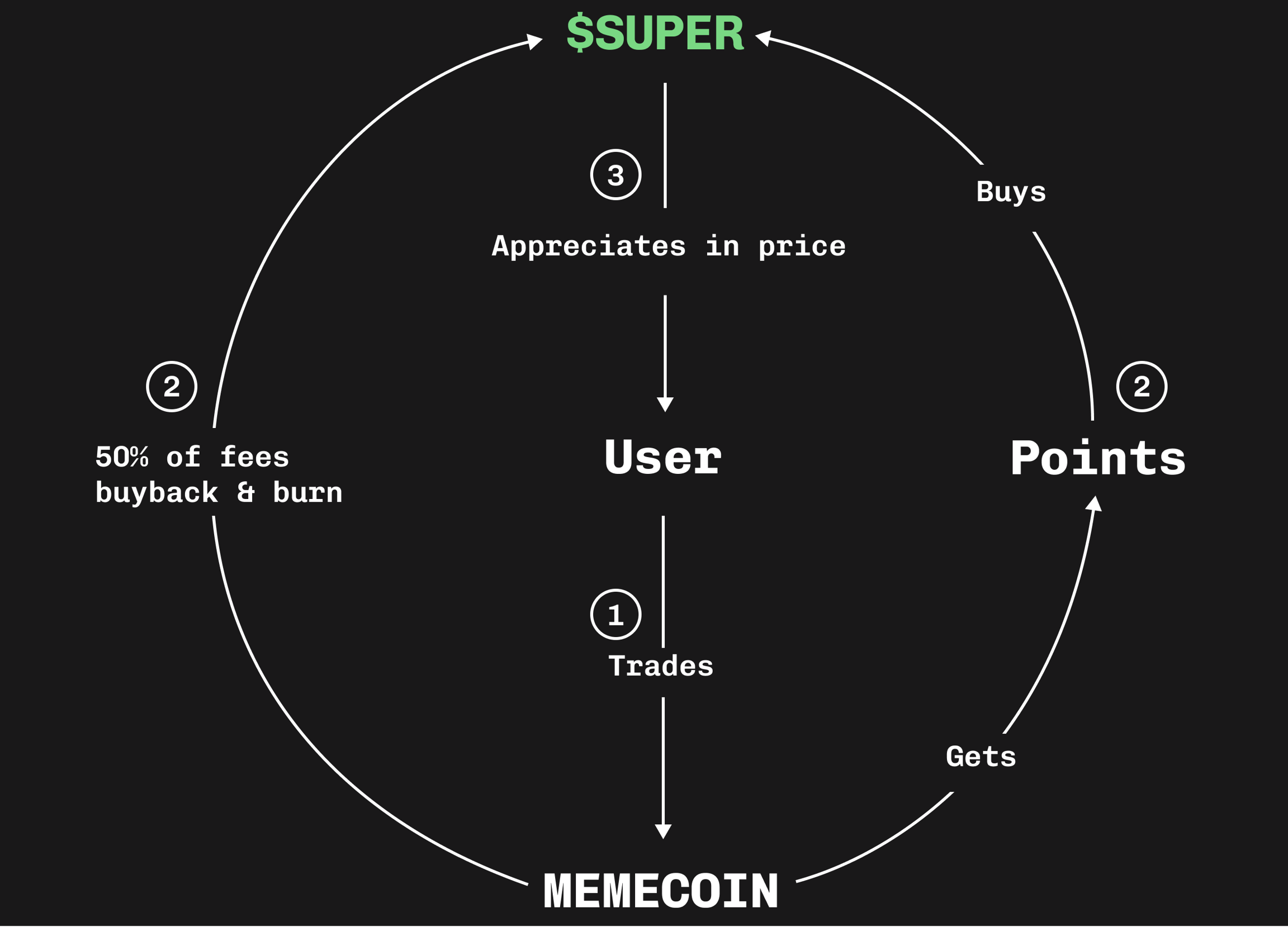
Therefore, the $SUPER purchased by early users at a fixed price will be lower than the market price of $SUPER after the projects long-term repurchase + destruction. The current market value of $SUPER is about 210,000 US dollars. From the price curve, it can be seen that early participants have made a profit.
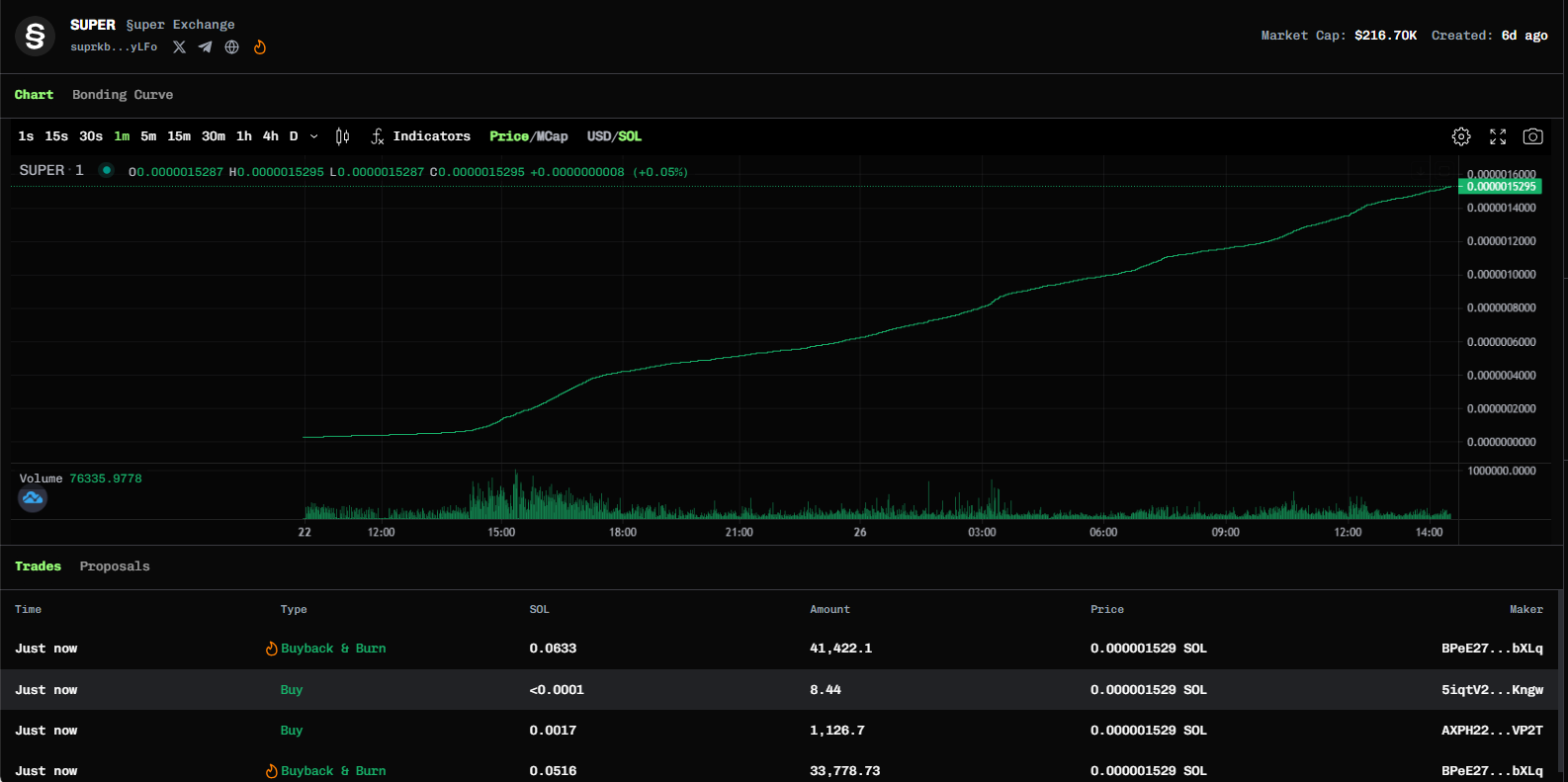
summary
In general, the two platform models are significantly different, but both attempt to explore new paths for asset issuance through mechanism adjustments:
Time.fun divides celebrity time into tradable tokens, which is essentially an attempt to monetize social influence on the chain using different token issuance methods. Its core relies on the personal traffic of creators. In the short term, it may gain popularity due to the endorsement and support of Solana bigwigs, but in the long term, it needs to verify the willingness of users to pay and the sustainability of creators enthusiasm for construction.
Super.Exchange uses the innovative curve and token purchase limit + repurchase mechanism to show the gameplay of attracting small-capital retail investors. However, in the long run, the game between small funds may be more likely to evolve into PVP in a short period of time. The point incentive is highly dependent on the expected token price of $SUPER. If the market continues to be sluggish, it may weaken the attractiveness of the model.
Unfortunately, the current market sentiment is not good. Whether it is Time.funs time sale or Super.exchanges points and coins, if the market enthusiasm continues to decline, the current pursuit of these new assets may just be a helpless move by small funds in fear of falling. Whether short-term enthusiasm can be transformed into long-term value still depends on the teams willingness to continue to build the project itself.
As a user, being willing to try and embrace new opportunities may be a feasible way to find new opportunities during the market confusion period. However, you still need to pay attention to risks, participate cautiously, and DYOR.










